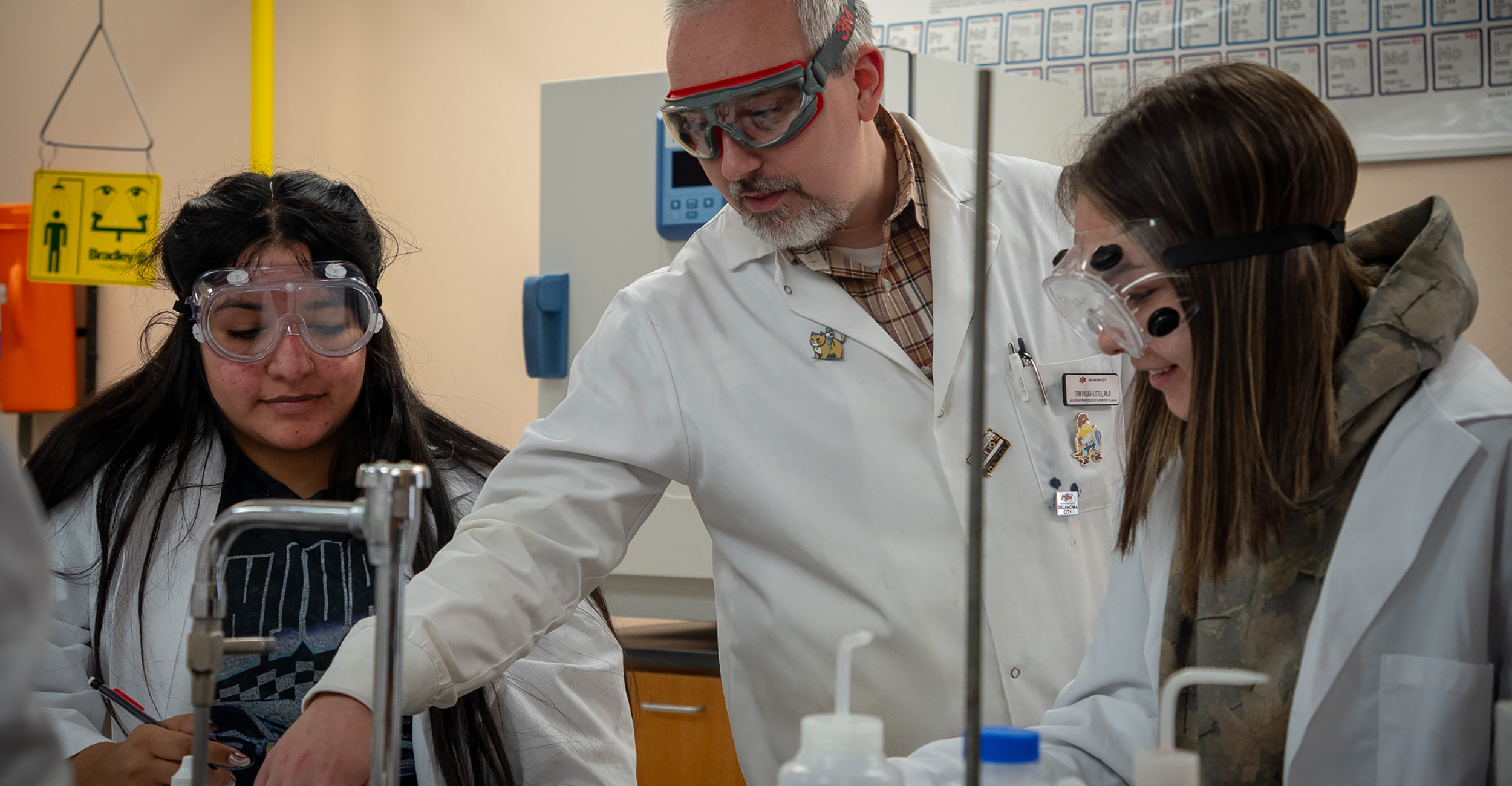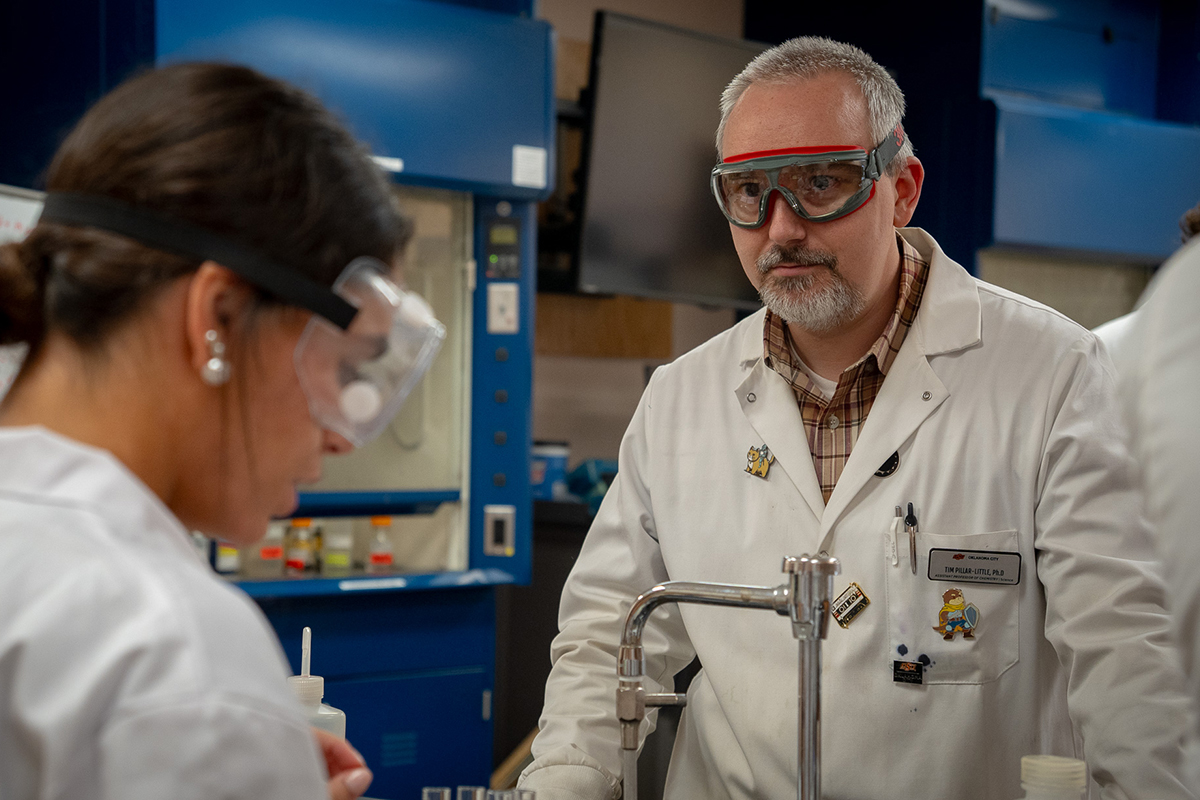
OSU-OKC professor explores the power of carbon nanoparticles
Tuesday, November 18, 2025
Media Contact: Matt Price | Director, Marketing and Communications | 405-945-6733 | matthew.l.price@okstate.edu
Dr. Tim Pillar-Little’s graduate research delved into the microscopic world of carbon nanoparticles: specifically, a unique type known as graphene quantum dots.
These tiny particles, invisible to the naked eye, hold immense potential in fields ranging from cancer treatment to clean energy. Pillar-Little’s work focused on understanding how the placement of nitrogen atoms within these nanoparticles could dramatically alter their behavior and effectiveness.

For instance, nanoparticles with nitrogen atoms embedded inside showed promise in photodynamic therapy — a technique used to target and destroy cancer cells using light. Similarly, these modified particles could enhance the performance of hydrogen fuel cells, a technology that has long struggled to gain traction due to efficiency challenges.
The key breakthrough in his research was the realization that nitrogen atoms placed inside the nanoparticle structure were far more beneficial than those on the surface. However, achieving this required building the nanoparticles from the ground up, a complex but rewarding process.
Looking ahead, Pillar-Little envisions a future where this cutting-edge nanomaterial chemistry becomes a staple in chemical education. He sees an opportunity to design laboratory experiments around carbon nanoparticles that are not only safe and affordable but also environmentally friendly.
These experiments could span all five major sub-disciplines of chemistry — inorganic, analytical, biochemistry, organic, and physical — making them versatile tools for teaching.
By integrating his research into the classroom, Pillar-Little hopes to inspire the next generation of scientists while promoting hands-on learning with real-world relevance. His goal is to make nanomaterials accessible and engaging, turning complex chemistry into something students can see, touch and understand.
